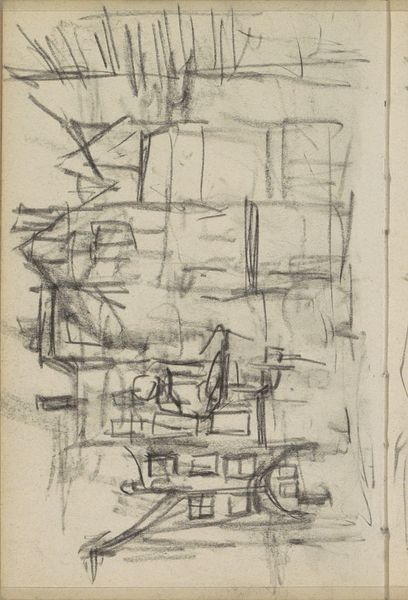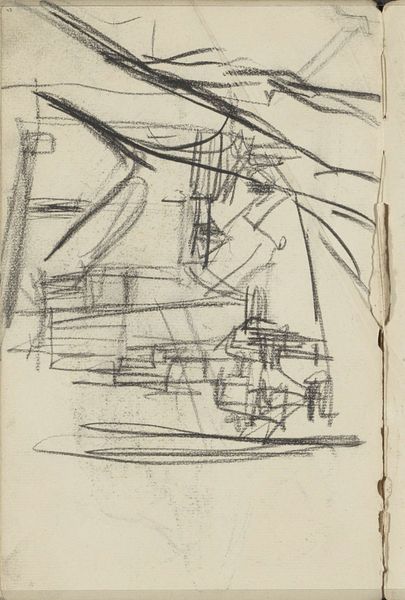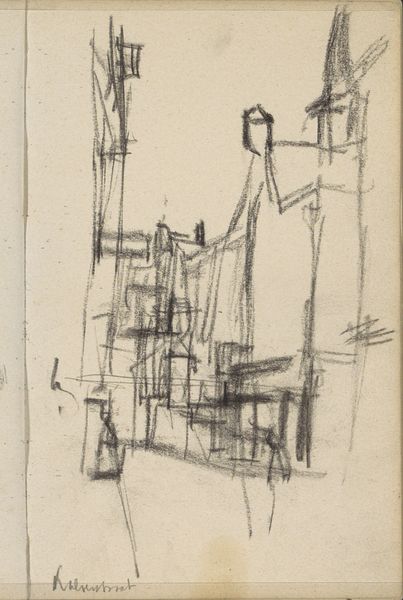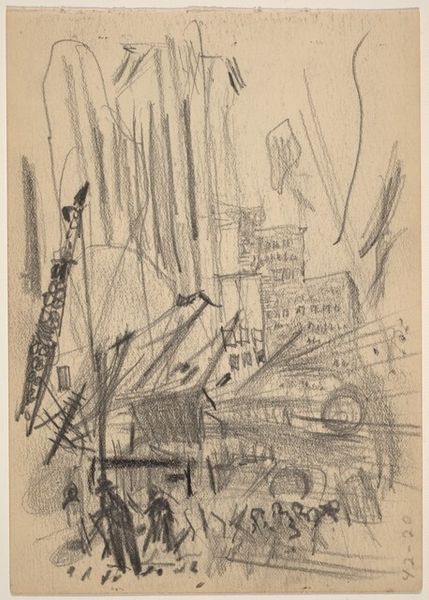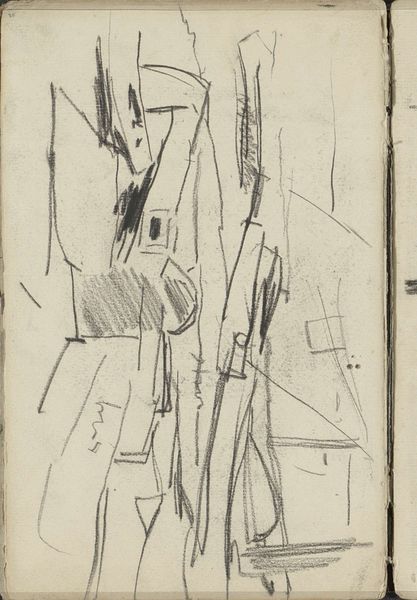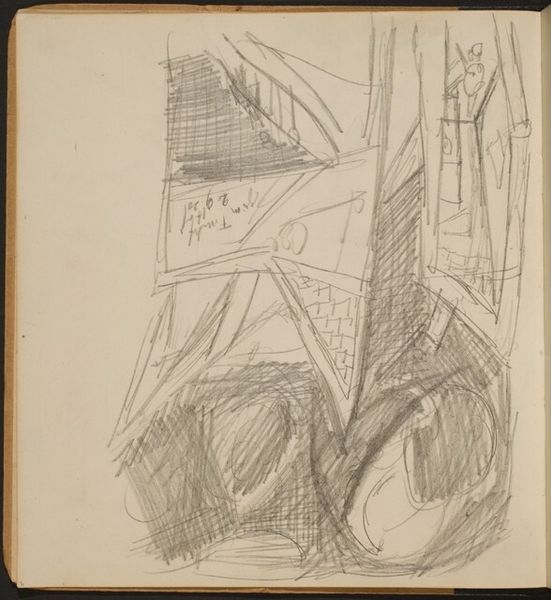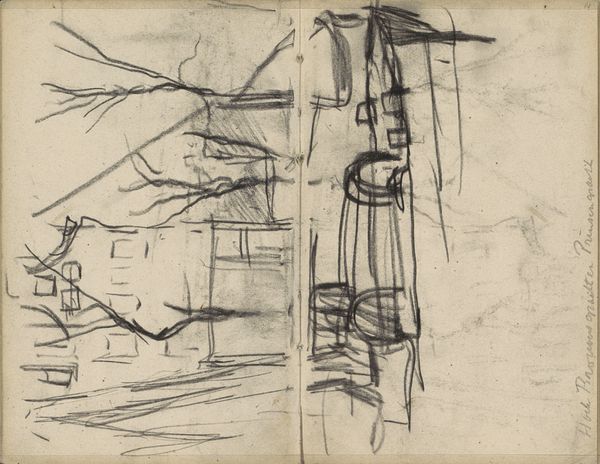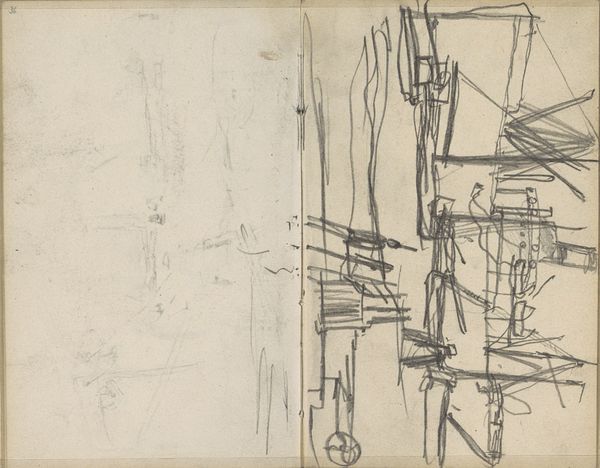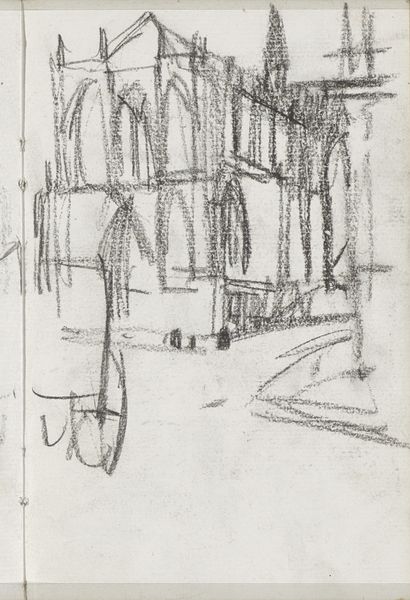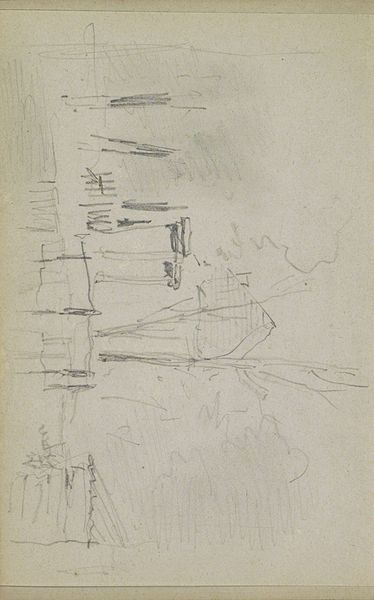
Copyright: Rijks Museum: Open Domain
Curator: Welcome. We're standing before Isaac Israels' "Figuren op een brug over een gracht," a graphite and pen drawing estimated to be from 1875 to 1934. It’s part of the Rijksmuseum's collection. What are your initial impressions? Editor: It's a blur, isn't it? A hurried moment captured, all tangled lines and smudges. Feels almost frantic, like the artist was trying to trap a thought before it vanished. I can almost hear the city noises. Curator: That sense of immediacy is typical of Israels’ approach. He often sketched en plein air, directly observing urban life. The impressionist movement embraced such practices, seeing value in fleeting moments and subjective perceptions. Editor: I get that "fleeting moment" thing. The figures are barely figures – just suggestions of people leaning, maybe gossiping? There's this strange kind of beauty in its incompleteness. Like peeking into someone's private thoughts. Curator: Exactly. These sketches weren't intended as finished pieces but as studies, exercises in capturing light, atmosphere, and movement. They provide valuable insight into his artistic process and how he perceived the world around him. The accessibility to quick studies of figures, scenes, and other imagery was popular among Impressionists. Editor: It's the honesty that grabs me. No posing, no pretense, just raw observation. Makes me think about all the little things we miss in our daily rush, all the tiny dramas playing out on bridges and street corners. What do you suppose this canal was to Israels? A gathering place? A site of daily interactions? Curator: That's a fascinating question. Canals have historically been vital arteries for trade and transport in Dutch cities. Bridges become meeting points, spaces for social exchange, and vantage points for observing the city's pulse. For Israels, I imagine it represented a space of dynamic encounters, a place to capture fleeting moments. Editor: There’s this lovely sense of…well, intimacy with the ordinary. I feel like I'm there, craning my neck to see what caught his eye. I appreciate that sense of everyday interaction more than other grand masterpieces, really. Curator: That's the charm of Israels’ sketches. They invite us to connect with the past, to observe and reflect upon everyday life in a way that is both intimate and historically significant. His loose sketches grant us access into a creative mind and make a moment into a study that we are witnessing well into the present. Editor: A generous little moment trapped in graphite, a little invitation into a stranger’s mind… it’s wonderful. Thanks for showing me that there are different ways to capture beauty and depth through different forms of artwork. Curator: Thank you. I appreciate your emotional and imaginative response. Art isn't just a product, it is an action—a form of making or doing.
Comments
No comments
Be the first to comment and join the conversation on the ultimate creative platform.
